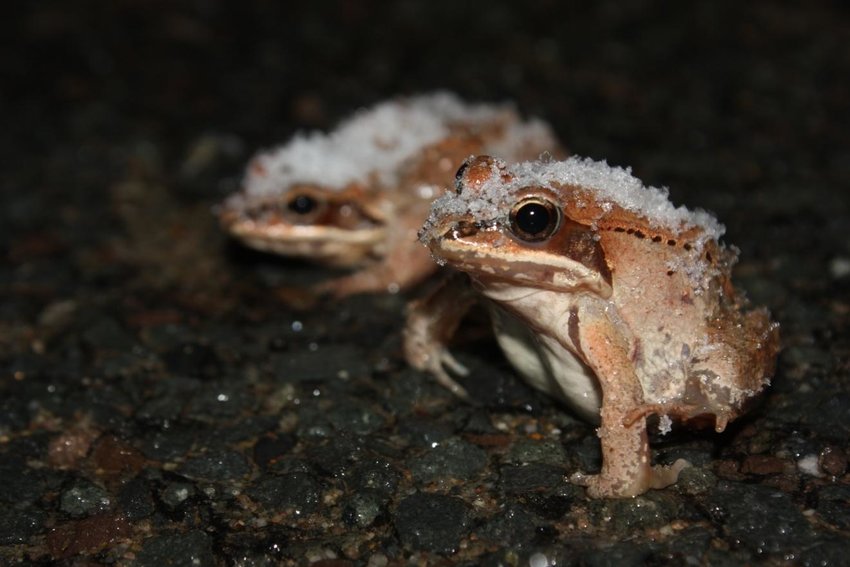«Unfreezable: The Remarkable Wood Frog’s Ability to Survive Extreme Cold»
Frogs are fascinating creatures that have adapted to survive in a variety of environments. Some species of frogs are able to withstand freezing temperatures and hibernate during the winter months, but there is one particular species of frog that doesn’t freeze — the wood frog.
The wood frog (Lithobates sylvaticus) is found throughout North America, ranging from the Arctic Circle to southern Canada and Alaska. They are typically brown or reddish-brown in color with a distinctive black mask around their eyes. These frogs are small, only growing to be about 2 inches in length.

During the winter months, wood frogs hibernate in leaf litter or beneath logs and rocks. However, unlike other frogs that hibernate and can tolerate freezing temperatures, the wood frog is able to survive being completely frozen.
When temperatures drop, the wood frog’s body begins to produce a natural antifreeze called glucose. This glucose is released into the frog’s body, protecting its cells from freezing and preventing damage. The frog’s heart stops beating, and its breathing and metabolic processes come to a complete halt.
Remarkably, up to 70% of the water in the frog’s body can freeze, but the frog itself remains unharmed. The frog essentially enters a state of suspended animation until temperatures rise and it is able to thaw out and resume its normal bodily functions.

This ability to survive being frozen solid has been studied by scientists who are interested in the frog’s unique physiology. Researchers have identified several genes in the wood frog that are involved in the production of glucose and other natural antifreeze compounds. These genes may have applications in the development of new medications and therapies for human diseases that involve the formation of ice crystals in the body, such as frostbite and organ damage due to freezing.
In addition to their remarkable freezing abilities, wood frogs are also important members of their ecosystems. They are predators of insects and other small invertebrates and serve as prey for birds, snakes, and other predators. Their tadpoles are also an important food source for fish and other aquatic animals.
Despite their resilience, wood frogs face threats from habitat loss and pollution. They are also susceptible to a fungal disease called chytridiomycosis, which has decimated frog populations around the world. Conservation efforts are underway to protect these important and fascinating creatures.
In conclusion, the wood frog is a remarkable creature that has adapted to survive in some of the harshest environments on the planet. Its ability to withstand freezing temperatures and emerge unharmed is a testament to the incredible resilience of nature. By studying this unique frog, we can gain insights into the mechanisms of natural antifreeze production and potentially develop new treatments for human diseases.












